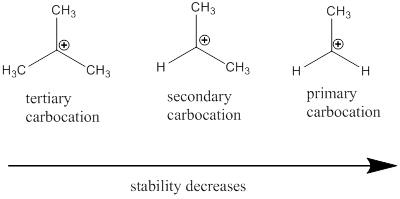
Concept explainers
(a)
INTREPRETATION:
The product formed for the reaction between fumarate and
CONCEPT INTRODUCTION:
Nucleophile: Nucleophiles are electron rich compounds which donates electrons to electrophilic compounds which results in bond formation.
Nucleophilic nature depends on the negative charge present in the molecule, the solvent in which it present and the electronegativity of the atom.
Electrophile: Electrophiles are electron deficient compounds which accepts electrons from nucleophiles that results in bond formation.
The curved arrows are generally used to indicate the flow of electrons present in the reaction.
Addition Reaction: It is defined as chemical reaction in which two given molecules combines and forms product. The types of addition reactions are electrophilic addition, nucleophilic addition, free radical additions and cycloadditions. Generally, compounds with carbon-hetero atom bonds favors addition reaction.
In addition reaction of
Oxidation Reaction: It involves loss of electrons, addition of oxygen atoms or removal of hydrogen atoms.
Oxidizing Reagents: The chemical agents used to add oxygen or remove hydrogen which finally reduced on oxidizing the other compound.
Carbocation: it is carbon ion that bears a positive charge on it.
Carbocation stability order:

Enantiomers: they are chiral molecules whose mirror images are not superimposable.
R and S nomenclature: it is used to assign the molecule using CIP rules.
The CIP rules are as follows:
Select the chiral carbon and assign the numbers according to the decreasing
If the numbering follows clockwise direction then the molecule is termed as R and if it follows anti-clockwise direction then molecule is termed as S.
(b)
INTREPRETATION:
The product formed for the reaction between maleate and
CONCEPT INTRODUCTION:
Nucleophile: Nucleophiles are electron rich compounds which donates electrons to electrophilic compounds which results in bond formation.
Nucleophilic nature depends on the negative charge present in the molecule, the solvent in which it present and the electronegativity of the atom.
Electrophile: Electrophiles are electron deficient compounds which accepts electrons from nucleophiles that results in bond formation.
Chemical reaction involves bond making and breaking of two or more reactants in order to attain products from the reactants.
The curved arrows are generally used to indicate the flow of electrons present in the reaction.
Addition Reaction: It is defined as chemical reaction in which two given molecules combines and forms product. The types of addition reactions are electrophilic addition, nucleophilic addition, free radical additions and cycloadditions. Generally, compounds with carbon-hetero atom bonds favors addition reaction.
In addition reaction of alkenes when two substituents are placed on same side of
Oxidation Reaction: It involves loss of electrons, addition of oxygen atoms or removal of hydrogen atoms.
Oxidizing Reagents: The chemical agents used to add oxygen or remove hydrogen which finally reduced on oxidizing the other compound.
Carbocation: it is carbon ion that bears a positive charge on it.
Carbocation stability order:

Enantiomers: they are chiral molecules whose mirror images are not superimposable.
R and S nomenclature: it is used to assign the molecule using CIP rules.
The CIP rules are as follows:
Select the chiral carbon and assign the numbers according to the decreasing atomic mass of atoms attached to it.
If the numbering follows clockwise direction then the molecule is termed as R and if it follows anti-clockwise direction then molecule is termed as S.
Want to see the full answer?
Check out a sample textbook solution
Chapter 6 Solutions
Organic Chemistry
- (i) Acetylation of glucose with acetic anhydride gives glucosepentaacetate. Write the structure of the pentaacetate.(ii) Explain why glucose pentaacetate does not react with hydroxylamine?arrow_forwardWhat is meant by peptization? Give a suitable example.arrow_forwardDraw a stepwise mechanism for the conversion of geranyl diphosphate to α-terpinene. Steroidsarrow_forward
- what reaction is catalyzed by phosphoglucomutase(subtrates and products)? What is the cofactor for this reaction?arrow_forwardName an aldohexose other than d-glucose that is oxidized to d-glucaric acid by nitric acid. a. What is another name for d-glucaric acid? b. Name another pair of aldohexoses that are oxidized to identical aldaric acids.arrow_forward(i) Acetylation of glucose with acetic anhydride gives glucose pentacetate. Write the structure of the pentacetate. (ii) Explain – Why glucose pentacetate does not react with hydroxylamine?arrow_forward
- Why is Step 3 of glycolysis called the commitment step?arrow_forwardCrocin, which occurs naturally in crocus and gardenia flowers, isprimarily responsible for the color of saffron. Q: What lipid and monosaccharides are formed by the hydrolysis of crocin?arrow_forward(i) Deficiency of which vitamin causes rickets?(ii) Give an example for each of fibrous protein and globular protein.(iii) Write the product formed on reaction of D-glucose with Br2 water.arrow_forward
- Copy the reaction scheme and draw the structural formulae of the two triglycerides (1) and (2) that could produce the triglyceride product 4. Indicate which two fatty acids have swapped between the starting triglycerides by labelling them as a and b in the starting materials and product. What other reagent (3) is needed to carry out the inter-esterification reaction above?arrow_forwardf) why is significant serum (in the bloodstream) cholesterol reduction so difficult, and why do most of the drugs designed to reduce cholesterol target the liver?arrow_forward1. Carbohydrates classification. 2. Write down the reactions: a) α,D-Glucopyranose + C2H5OH → b) D-Glucose + [Ag(NH3)2]+ → c) D-Glucopyranose + (CH3CO)2 O → d) D-Glucopyranose + CH3I → e) D-Glucose + HNO3 → f) D-Glucose + H2 → g) Lactose formation h) Sucrose hydrolysis 3. Write down the formula of β,D-galactopyranosearrow_forward


 Organic And Biological ChemistryChemistryISBN:9781305081079Author:STOKER, H. Stephen (howard Stephen)Publisher:Cengage Learning,
Organic And Biological ChemistryChemistryISBN:9781305081079Author:STOKER, H. Stephen (howard Stephen)Publisher:Cengage Learning, General, Organic, and Biological ChemistryChemistryISBN:9781285853918Author:H. Stephen StokerPublisher:Cengage Learning
General, Organic, and Biological ChemistryChemistryISBN:9781285853918Author:H. Stephen StokerPublisher:Cengage Learning



